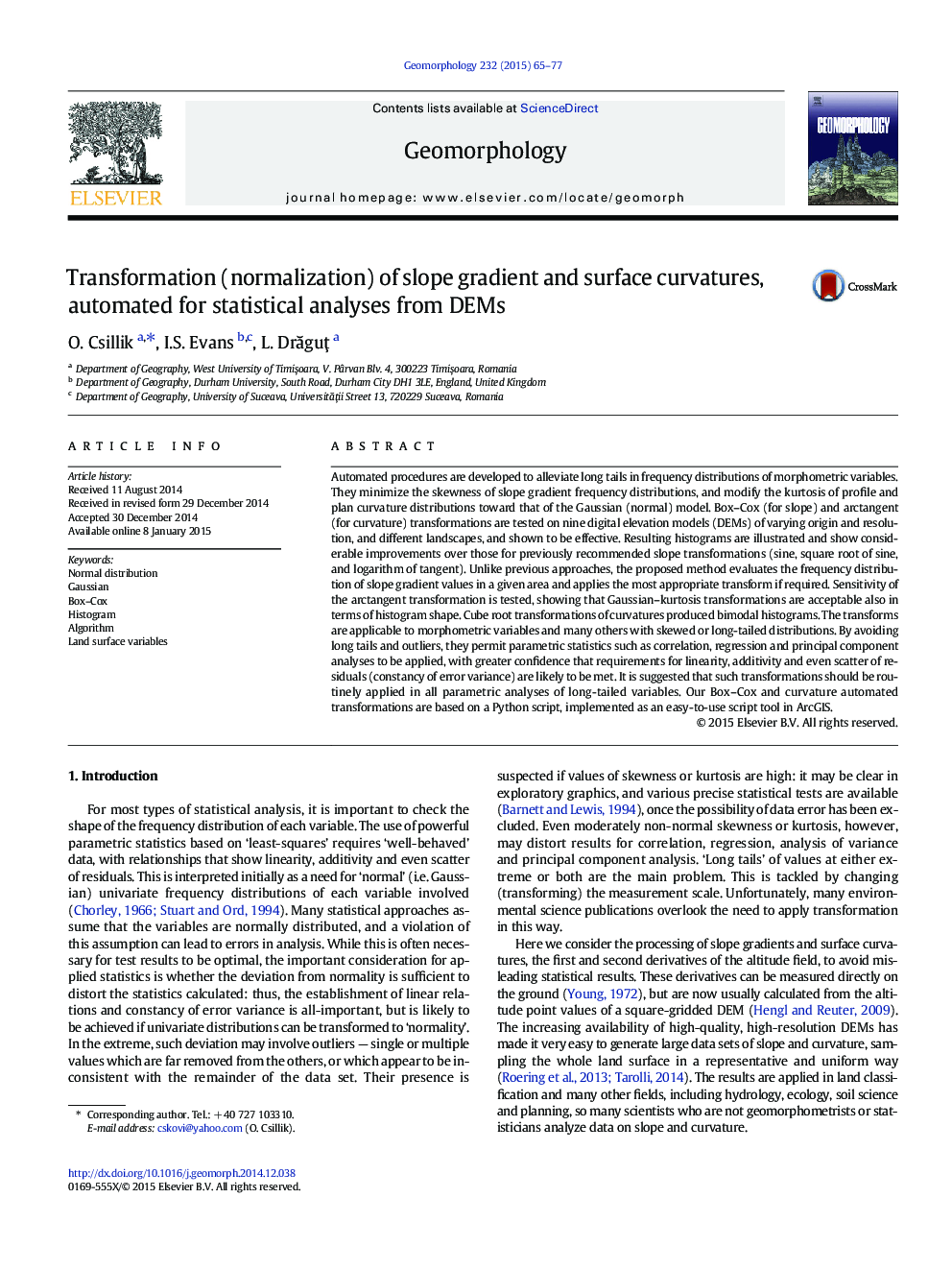| کد مقاله | کد نشریه | سال انتشار | مقاله انگلیسی | نسخه تمام متن |
|---|---|---|---|---|
| 4684357 | 1635417 | 2015 | 13 صفحه PDF | دانلود رایگان |

• An ArcGIS tool is provided to transform scales for slope gradient and curvature.
• This procedure successfully normalizes skewness for slope and kurtosis for curvature.
• Tests on various types and scales of DEM are successful.
• Tests on various landscape types are successful.
• Transformations are needed because these variables commonly diverge from normality.
Automated procedures are developed to alleviate long tails in frequency distributions of morphometric variables. They minimize the skewness of slope gradient frequency distributions, and modify the kurtosis of profile and plan curvature distributions toward that of the Gaussian (normal) model. Box–Cox (for slope) and arctangent (for curvature) transformations are tested on nine digital elevation models (DEMs) of varying origin and resolution, and different landscapes, and shown to be effective. Resulting histograms are illustrated and show considerable improvements over those for previously recommended slope transformations (sine, square root of sine, and logarithm of tangent). Unlike previous approaches, the proposed method evaluates the frequency distribution of slope gradient values in a given area and applies the most appropriate transform if required. Sensitivity of the arctangent transformation is tested, showing that Gaussian–kurtosis transformations are acceptable also in terms of histogram shape. Cube root transformations of curvatures produced bimodal histograms. The transforms are applicable to morphometric variables and many others with skewed or long-tailed distributions. By avoiding long tails and outliers, they permit parametric statistics such as correlation, regression and principal component analyses to be applied, with greater confidence that requirements for linearity, additivity and even scatter of residuals (constancy of error variance) are likely to be met. It is suggested that such transformations should be routinely applied in all parametric analyses of long-tailed variables. Our Box–Cox and curvature automated transformations are based on a Python script, implemented as an easy-to-use script tool in ArcGIS.
Journal: Geomorphology - Volume 232, 1 March 2015, Pages 65–77